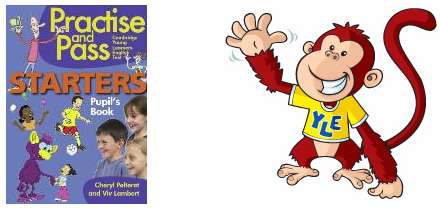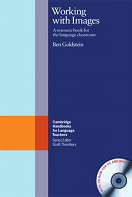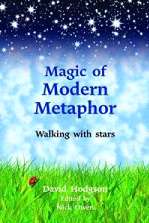Short Book Reviews
Hanna Kryszewska, Poland
Hanna Kryszewska is a teacher, teacher trainer, trainer of trainers. She is a senior lecturer at the University of Gdańsk, and EU Teacher Training College where she trains pre-service teachers. She is also Director of Studies at SWPS, Sopot, Poland. She is co-author of resource books: Learner Based Teaching, OUP, Towards Teaching, Heinemann, The Standby Book, CUP, Language Activities for Teenagers, CUP and a course book series for secondary schools: ForMat, Macmillan. She is also co-author of a video based teacher training course: Observing English Lessons. Hania is a Pilgrims trainer and editor of HLT Magazine.
E-mail: hania.kryszewska@pilgrims.co.uk

Practise and Pass. Cambridge Young Learners Test. Starters. Pupil’s Book. C. Pelteret and V. Lambert. (2010) DELTA Publishing. ISBN 978-1-905085-36-1, pp64. This activity based book is part of a series preparing young learners for the Cambridge Young Learners English Test. The book prepares YL for the Starters exam. It prepares the very young for the very first language exam of their lives. Not the last one. It is based on the revised exam syllabus and it offers preparation, practice and sample exam papers. The book has a format similar to the exam format, including the design and type of artwork the candidates taking the exam will encounter in the exam. At the same time, real life photography illustrates the exam situations the learners may find themselves in. However, there are only children presented, whilst in the exam there is one child examined by an adult. The material contains exam tips and grammar boxes, neat and clear. This material is great exam practice material which can rarely be found on the publishing market. However, sometimes it is not clear who the book is for. There is a summary of the procedures in the “Pupil’s nook” which are clearly inaccessible to the YL.

Working with Images. B. Goldstein (2008) CUP. ISBN 978-0-521-71057-2, pp 242+ CD-ROM. The book revisits the role of images in the language class. We now know more about the role of visual material in the teaching-learning process thanks to VAKOG derived from NLP and the emphasis Howard Gardner puts on the visual-spatial intelligence in his theory of the Multiple Intelligences. The book addresses many of the issues of visual impact. You will find some of the classic activities we have been using in the language classroom for years as well as a wealth of novel ideas. The strength of the book lies in the wealth of authentic materials which you could find on the Internet, but all you need can be found on the CD-ROM which comes with the book. The images used in the book range from paintings by Cezanne and Breughel to Maria Badaracco. The novel ideas in the book go beyond the content of the image, as it also introduces looking at how a photo was taken, the creation of images with IT, the creation of visual limericks and ‘wanted’ notices, movie storyboards, icons, pictograms just to name a few. The learners will learn not only language like: ‘in the photo I can see’ but also terms like ‘ low angle shot’, “ aerial view”. This book is definitely a must-have!

Magic of Modern Metaphor. D. Hodgson (2010) Crown House Publishing. ISBN 978-184590394-7, pp 187. The book comes from the best tradition of parables. We know parables from, for example, the New Testament as well as from “Chicken Soup for the Soul”. Parables, which in fact are metaphors, are a kind of story which illustrates a point and makes the reader or listener figure out their meaning for themselves. In a language class this is precious as it fosters speaking, communicating and exchanging opinions. However, the author of the book is not a language teacher and the stories would sometimes need some kind of language adaptation and simplification. The book starts with a lovely foreword by Nick Owen and a quote from Philip Pullman: “Stories are the most important thing in the world. Without stories, we wouldn’t be human at all.” How true. In the book you will find a collection of stories in which two characters recur: Jack and his granddad. The stories are short and succinct. They in fact are full of ancient wisdom shown through modern relationships. The stories are illuminating and thought provoking, although, personally, I sometimes wished there was a Jane and grandma, from time to time. The stories are one to two pages long, hence perfect to read when you have a moment to spare and also suitable for classroom presentation. The stories are followed by a section on how to interpret them and questions you might want to ask the readers or listeners. You can tell that the author is strongly rooted in NLP. It is reflected in the stories in a covert way, but there is also an overt aspect . At the end of the book the author includes a section called “NLP and the stories”. These five pages sum up the most important areas of NLP and how the stories fit into it. The book is both a book for the language learner as well as a book for the human being.

The Methodology and Language for Primary Teachers course can be viewed here
The NLP for Teachers course can be viewed here
The Teaching English Through Multiple Intelligences course can be viewed here
The Creative Methodology for the Classroom course can be viewed here


|